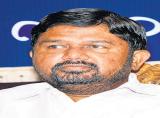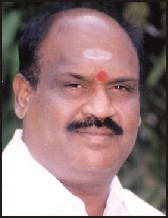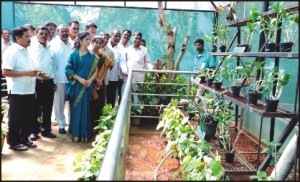Vikram Sampath pays tribute to Maya Rao, iconic dancer and choreographer who brought Kathak to south India

Today, in the twilight of my life, my heart and body are a storehouse of my experiences.” These are the opening lines of iconic dancer, choreographer and teacher Dr Maya Rao’s recently released autobiography ‘Maya Rao: a lifetime in choreography’. And now with the sudden demise of this colossus in the early hours of Monday, what we have lost is an entire archive of Indian dance in general and Kathak in particular, which was her life-breath. Thankfully, the untiring efforts of her daughter and dancer Madhu Nataraj have captured slices of this story for posterity through this autobiography.
Born on 2nd May 1928 in a Konkani Saraswat Brahmin household, young Maya’s creative spirit yearned for the arts. A performance by the celebrated Uday Shankar in Bangalore catalysed a strong desire for dance, though in the 1930s girls from respected homes were discouraged from taking up the art. Finally after extracting a promise from her that she would never perform in public, her father put 14 year old Maya under the tutelage of Sohan Lal, a Kathak exponent from Jaipur. Ironically the same forbidden art became the source of livelihood for her when her father passed away when she was just 17. In one early choreographic performance at the city’s Town Hall, in 1947, she met music composer, flautist and a dealer of rare art books, M S Nataraj of Saraswathi Orchestra. A courtship of 18 long years eventually resulted in their marriage in 1964!
Maya left Bangalore in 1951 to pursue her Kathak training in Jaipur. Having completed her Honours degree in English it was easy to secure a job at the Maharani Gayatri Devi Girls’ School. Briefly she moved to Ceylon to learn the Kandyan dance from the legendary Chitrasena. Maya’s life changed when she became the first Government of India scholarship-holder in 1955 to learn under renowned Kathak maestro Shambhu Maharaj of the Lucknow Gharana, at the Bharatiya Kala Kendra, New Delhi. After a rigorous taleem under him and Sunderprasad of the Jaipur gharana, the young danseuse was all set to soar in the skies.
Maya did a three year course in Moscow in choreography which was her passion. She is the only Indian with a PG Certificate in Choreography from the former USSR. The splendour of the Russian ballet that she learnt in Moscow added new dimensions to her creative spirit. Several Indian productions like ‘Shakuntala’ that she pioneered there won great appreciation.
On her return to India, she set up the Natya Institute of Choreography in Delhion 12 August, 1964, with the support of Kamaladevi Chattopadhyay. This was a path-breaking effort in the world of Indian ballets and the country’s only degree college of choreography. She then shifted to Bangalore in 1986 with her daughter Madhu at the invitation of then Karnataka chief minister Ramakrishna Hegde.
Hegde made her in-charge of the SAARC Festival being held in Bangalore. She soon established a school for dance and choreography in Bangalore and also did a lot of research on dance. It was Maya’s efforts that brought Kathak to south India and she propagated it through training, concerts, festivals and designing a pedagogical structure for it. She has served on several government bodies like Karnataka SangeethaNrutya Academy (1987-1990) during which period she initiated festivals at Heritage monuments like Somanathapura, Pattadakkal and Halebid. Several productions by her like Amir Khusrau, Ramayana Darshanam (with Kuvempu), HoysalaVaibhava, Surdas, Krishnaleela and others are milestones in the annals of Indian dance.
Maya didi, as she is fondly remembered, has trained over 3,000 students in a lifetime dedicated to dance. She is the recipient of several awards including the National Award for Choreography from the Sangeet Natak Akademi, Rajyotsava Award and Shantala Award.
It is a deep sense of personal loss for me as I was fortunate to have been the beneficiary of a lot of affection from Maya didi. It was my book on Gauhar Jaan that caught her attention and she invited me home for dinner. The connection was almost instantaneous. Thereafter, despite her failing health, she ensured that she graced each and every special occasion in my life to bless me-be it my book launches or the exhibition of the Archive of Indian Music or IGNCA events. She in fact readily consented to be a part of the IGNCA Advisory Board only to lend support to my efforts. Ever generous in showering her appreciation and affection, it was just 10 days back that she agreed to chair an IGNCA lecture I had organised. Seeing her off that rainy evening at the Bangalore International Centre, I could never have imagined that this would be the final adieu. Even as I was gearing up to welcome her home this week, the midnight message from Madhu, announcing her sudden demise, left me totally numbed and shocked. For me, Maya didi’s zest for life, subtle sense of humour and disarming smile will remain etched forever. While her loss is irreplaceable, her colossal contributions to the dance world, her memory and her legacy live on.
The author is a Bangalore-based author/historian and Executive Director of the Indira Gandhi National Centre for the Arts (IGNCA).
THEY REMEMBER
It was the summer of 1984. Veteran critic BVK Shastry had invited Maya Rao to conduct a choreography workshop in Bangalore. I joined and was fortunate to receive training from the doyenne herself. She chose me to essay the role of Queen Shantala in her production Vijayanagara Vaibhava. She brought Kathak and the concept of choreography to Bangalore way back in the 80s. Maya aunty’s shifting to Bangalore then changed the dance scene. She brought in group choreography, professionalism, technology, and aesthetics into a field that had only soloists, whose occasional flashes of excellence carried the performance. Chief Minister Ramakrishna Hegde, a man of the arts, helped Maya aunty move to Bangalore and gave a generous government funding to start the Institute of Choreography. Hundreds of dancers trained in the Institute and came out as ‘finished dancers’, whatever be the style. It is a great loss to the arts scene. May her soul always be at peace.Prathibha Prahlad, Dancer
Dr Maya Rao has a special place in Rangoli Metro Art Centre. This July, we had curated her show and she was in her rare wit and humour. “Conversation with Maya Rao” was specially held at the Art Centre to honour her. It was a pleasure to hear this cultural activist who set a benchmark on how much a person can do in a lifetime. Vasanth Rao General Manager (finance), Bangalore Metro Rail Corporation
I got the news Monday morning just when I left town. It came as a shocker, but at least, she didn’t have to go through the ordeal of being sick. That is particularly difficult for an artiste who has always been on her feet. I remember travelling with her and her husband once to Mysore, where we were guests for a programme. It was an enjoyable trip, where we chatted about dance. I’ve also spent some quiet evenings with Maya didi at her place. This year has been particularly special and she must have been satisfied the way things panned out. Vani Ganapathy, Dancer
Maya Rao took her final bow last night. Oh what a year it has been for her: her darling daughter found a life partner, her autobiography was released and a fantastic new show ‘Kathak Through the Ages’ had its premier. I read out these lines from Maya Rao’s book at its launch recently: “Even in the winter of my life there are many aspirations and dreams I look forward to. God willing and energy permitting, I hope that my zest for life and dance will continue.” It will continue in Madhu Nataraj Kiran, their students, and all of us whose lives Maya di touched. She was not just any octogenarian.Sandhya Mendonca Managing Director & Editor in Chief,Raintree Media Pvt Ltd
source: http://www.bangaloremirror.com / Bangalore Mirror / Home> Bangalore> Other / by Bangalore Mirror Bureau / September 02nd, 2014









